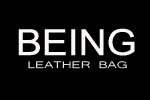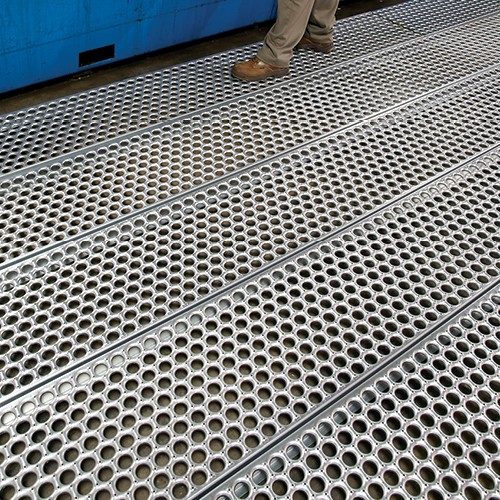Greetings in The Mighty Name of Jesus, The Christ!!!
Blessings Upon Blessings
Brothers and Sisters we are a Blessed People that goes beyond understanding. For if you Look in depth to all the things that are in this World, they go beyond What was Created to a depth that even a Microscope cannot see. Man may say that we Know the Depths of what we see, but I would call all liars.
So how do we as Born Again, Blood Bought, know this? There are two ways, one because The Father said so and secondly man’s Understanding Of Creation is limited to What The Father has Allowed Us To Find. Man wants things bigger, faster and better but cannot see past the end of our noses. There are many, many things that are in this World that we do not understand. Yet Man…wants to be God!
Isaiah 55:8-9 KJV
"8 For my thoughts [are] not your thoughts, neither [are] your ways my ways, saith the LORD. 9 For [as] the heavens are higher than the earth, so are my ways higher than your ways, and my thoughts than your thoughts."
For Our Understanding we cannot understand how in the first place that The Father Created the Heavens and Earth out of NOTHING, nor can we even come close to how The Father Created Man from Dust or even how The Fathers Breath made a Living Soul. But in these things we are Blessed beyond measure literally!
I want you to take just 5 minutes, look around your environment that you are currently in, start in one place and think of The Depth Of Creation all the way down to nothing, I will guarantee you cannot get past 1. We, mankind take The Fathers Creation for granite not truly understanding the Blessings that He has given us. Man may say “I Made This…”, but who Made the Beginning? Who Gave the Knowledge, Understanding and Wisdom, but only in a fraction for us to be able to Create anything?
There are Blessings that we can Obtain that go beyond the Lost, beyond the Heathen, beyond God’s Enemies, but there is a Clause. Consider the following Scriptures…
Deuteronomy 28:1-10 KJV
"1 And it shall come to pass, if thou shalt hearken diligently unto the voice of the LORD thy God, to observe [and] to do all his commandments which I command thee this day, that the LORD thy God will set thee on high above all nations of the earth: 2 And all these blessings shall come on thee, and overtake thee, if thou shalt hearken unto the voice of the LORD thy God. 3 Blessed [shalt] thou [be] in the city, and blessed [shalt] thou [be] in the field. 4 Blessed [shall be] the fruit of thy body, and the fruit of thy ground, and the fruit of thy cattle, the increase of thy kine, and the flocks of thy sheep. 5 Blessed [shall be] thy basket and thy store. 6 Blessed [shalt] thou [be] when thou comest in, and blessed [shalt] thou [be] when thou goest out. 7 The LORD shall cause thine enemies that rise up against thee to be smitten before thy face: they shall come out against thee one way, and flee before thee seven ways. 8 The LORD shall command the blessing upon thee in thy storehouses, and in all that thou settest thine hand unto; and he shall bless thee in the land which the LORD thy God giveth thee. 9 The LORD shall establish thee an holy people unto himself, as he hath sworn unto thee, if thou shalt keep the commandments of the LORD thy God, and walk in his ways. 10 And all people of the earth shall see that thou art called by the name of the LORD; and they shall be afraid of thee."
This is a Blessing that The Father gave to the Hebrews, to Israel that we also have been made heirs with them can obtain as well, as long as we abide by The Clause that The Father put in. The Clause is the following, “hearken diligently unto the voice of the Lord they God” this is the First Clause. The Second Clause is this…, “to observe and to do all his commandments”. Many, many of you Pray and Pray and Pray but it is for selfish gain and receive No Blessing, because you do not even do the First Clause. You do not truly Seek Jesus, but think you can use Jesus as a gene in a bottle.
The above Scriptures start with the Clause and ends with the same Clauses with the Blessings between the Clauses. If the Clauses are Broken, if they are Not Followed, then the Blessings will not come, they will not happen no matter how much you beg and plea with Jesus.
Some will say, “Well that was in the Old Testament, it is different in the New Testament because we are Under Grace…”. Has Jesus not said the same thing…?
John 14:15 KJV
“If ye love me, keep my commandments."
Philippians 4:19-20 KJV
"19 But my God shall supply all your need according to his riches in glory by Christ Jesus. 20 Now unto God and our Father [be] glory for ever and ever. Amen."
Matthew 5:3-12 KJV
"3 Blessed [are] the poor in spirit: for theirs is the kingdom of heaven. 4 Blessed [are] they that mourn: for they shall be comforted. 5 Blessed [are] the meek: for they shall inherit the earth. 6 Blessed [are] they which do hunger and thirst after righteousness: for they shall be filled. 7 Blessed [are] the merciful: for they shall obtain mercy. 8 Blessed [are] the pure in heart: for they shall see God. 9 Blessed [are] the peacemakers: for they shall be called the children of God. 10 Blessed [are] they which are persecuted for righteousness' sake: for theirs is the kingdom of heaven. 11 Blessed are ye, when [men] shall revile you, and persecute [you], and shall say all manner of evil against you falsely, for my sake. 12 Rejoice, and be exceeding glad: for great [is] your reward in heaven: for so persecuted they the prophets which were before you."
I have so many Blessings through the years that I literally cannot count them all, but it is not because I am Perfect In The Will Of God, but it is that I SEEK Jesus and His Will, which is the same Will As The Father, for MY WHOLE LIFE and then I try to Walk In Obedience to that Will, with Grace Abound!
I can name some that you may not think of. I thank Jesus when I see a beautiful Sun Rise or Sun Set for it is a Blessings of The Fathers that I Can See. I thank Jesus when I am fishing and I look around at the Natural Landscape, for I am Blessed in Standing in the midst of The Fathers Creation. I am Blessed every time that I catch a fish, both great and small and I thank Jesus. I am Blessed when it is a hot day and in the midst of my labor, a small breeze comes along and refreshes me. This is only the micro tip of my Blessings. I Look for my Blessings by the hour!
For me, I can see Blessings in both Life and Death in that I am Blessed in the Direction, Guidance, Wisdom, Knowledge and Understanding that The Holy Spirit gives me through Jesus MY LORD!!!
Many of you have cursed your own Life because you “Say” you Believe, but do you really? If your Belief does not involve you Walking In Obedience, then you have No Blessings From Jesus, not even Eternal Life! Throughout the Old Testament and into the New Testament we find that Blessings are Accompanied by Obedience, for the two Walk Hand In Hand together as one. But, you cannot just Do what Jesus says and expect to be Blessed, it does not work that way. But it takes a Relationship, a Bond between You and Jesus for Blessings to occur.
Matthew 22:37-40 KJV
"37 Jesus said unto him, Thou shalt love the Lord thy God with all thy heart, and with all thy soul, and with all thy mind. 38 This is the first and great commandment. 39 And the second [is] like unto it, Thou shalt love thy neighbour as thyself. 40 On these two commandments hang all the law and the prophets."
Luke 10:27 KJV
“And he answering said, Thou shalt love the Lord thy God with all thy heart, and with all thy soul, and with all thy strength, and with all thy mind; and thy neighbour as thyself."
The Father and Jesus, REQUIRES, DEMANDS, that in order for Blessings to come, then Obedience MUST Come First!!! Now, with that being said, yes, there are times that Blessings come without obedience, but in all cases they are to Draw that person into a Relationship With Jesus and it may only be a onetime deal or it can be multiple. Doubting Thomas had to be Proven To that it was Jesus who stood before him by touching His Wounds.
John 20:27 KJV
“Then saith he to Thomas, Reach hither thy finger, and behold my hands; and reach hither thy hand, and thrust [it] into my side: and be not faithless, but believing."
Brothers and Sisters if you Want a Blessing, if you Need a Blessing then you Must First walk in Obedience to the Voice Of Our Lord Jesus. Thomas did not Receive the Blessing of Eternity until he first Obeyed the Voice Of Jesus To Do something first. Many Seek Answers, but Jesus says Seek Me First Not The Answer First.
The Father or Jesus or The Holy Spirit has not changed the Rules Of Blessings. They have not Added To the rules nor have they taken any away. Blessings are for us, but we MUST Seek and Obey Jesus First, even as Jesus did His Father, that is, Jesus Sought and Did only The Fathers Will With His Entire Life, even unto Death on the cross.
Hebrews 13:8 KJV
“Jesus Christ the same yesterday, and to day, and for ever."
Matthew 7:21 KJV
“Not every one that saith unto me, Lord, Lord, shall enter into the kingdom of heaven; but he that doeth the will of my Father which is in heaven."
John 5:30 KJV
“I can of mine own self do nothing: as I hear, I judge: and my judgment is just; because I seek not mine own will, but the will of the Father which hath sent me."
When you put Jesus First in your Entire Life, you will see Blessings Upon Blessings in Your Life!!! Even as Moses has said, so do I to you… Choosing is Your Free Will, that will determine Blessings or Cursing… Chose Today!
1 John 4:17 KJV
“Herein is our love made perfect, that we may have boldness in the day of judgment: because as he is, so are we in this world."
Deuteronomy 11:26-28 KJV
"26 Behold, I set before you this day a blessing and a curse; 27 A blessing, if ye obey the commandments of the LORD your God, which I command you this day: 28 And a curse, if ye will not obey the commandments of the LORD your God, but turn aside out of the way which I command you this day, to go after other gods, which ye have not known."
Amen and Amen!!!
Email: godsonlyfoundation@gmail.com
Website: ApostleLee.com











 https://bsptools.com/wp-content/uploads/2023/12/图片-1-350x263.png 350w,
https://bsptools.com/wp-content/uploads/2023/12/图片-1-350x263.png 350w,  https://bsptools.com/wp-content/uploads/2023/12/图片-2-350x233.png 350w,
https://bsptools.com/wp-content/uploads/2023/12/图片-2-350x233.png 350w, 
 https://bsptools.com/wp-content/uploads/2023/11/图片9-350x233.png 350w,
https://bsptools.com/wp-content/uploads/2023/11/图片9-350x233.png 350w, 

 https://bsptools.com/wp-content/uploads/2023/11/1701399944928-350x233.png 350w,
https://bsptools.com/wp-content/uploads/2023/11/1701399944928-350x233.png 350w,  https://bsptools.com/wp-content/uploads/2023/11/图片-2-1-350x223.png 350w,
https://bsptools.com/wp-content/uploads/2023/11/图片-2-1-350x223.png 350w, 